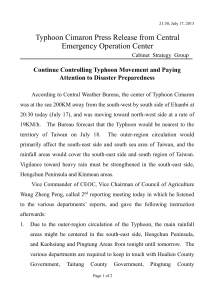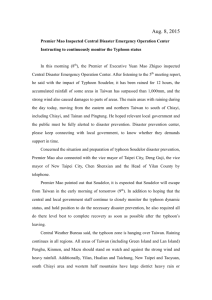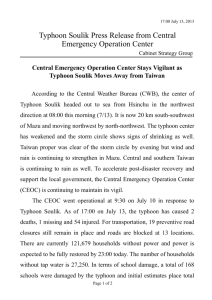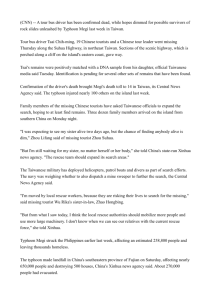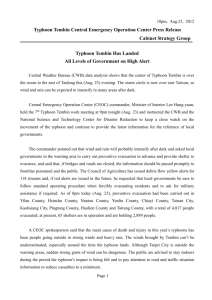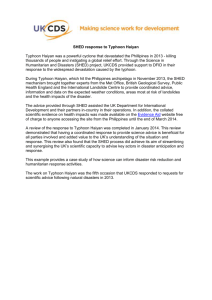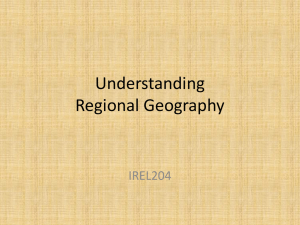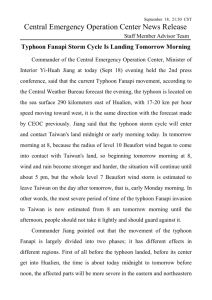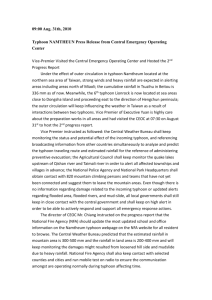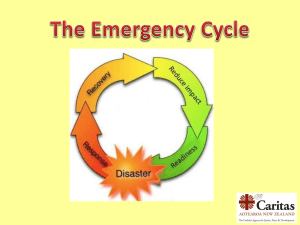National Fire Agency, Ministry of The Interior R.O.C. Attachment
advertisement
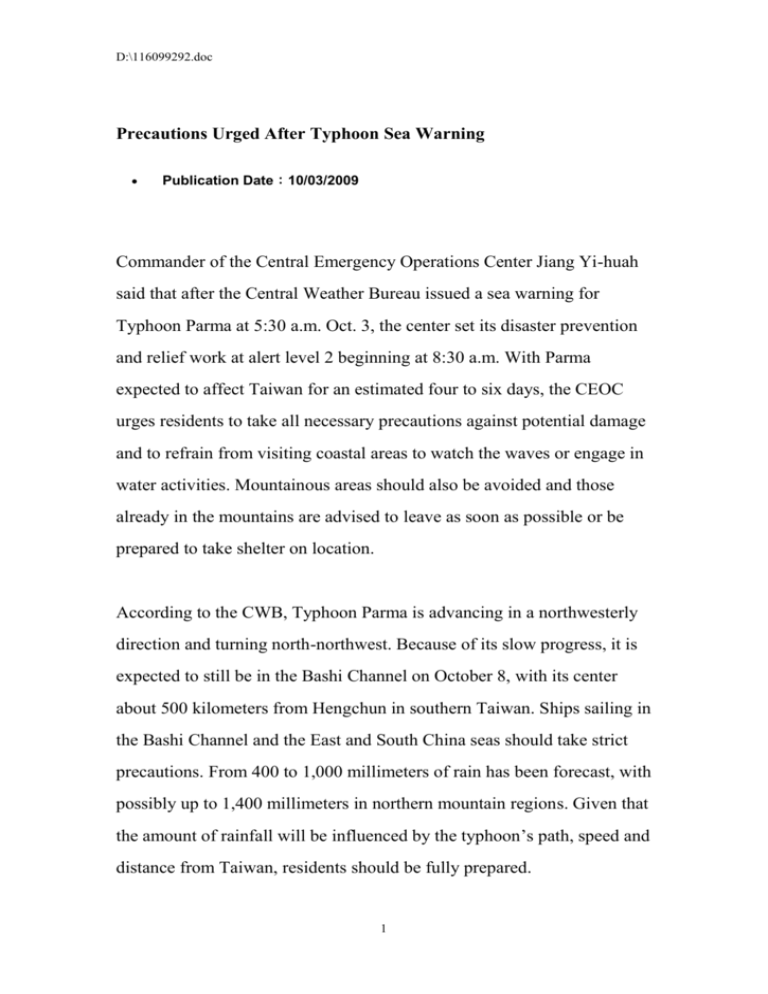
D:\116099292.doc Precautions Urged After Typhoon Sea Warning Publication Date:10/03/2009 Commander of the Central Emergency Operations Center Jiang Yi-huah said that after the Central Weather Bureau issued a sea warning for Typhoon Parma at 5:30 a.m. Oct. 3, the center set its disaster prevention and relief work at alert level 2 beginning at 8:30 a.m. With Parma expected to affect Taiwan for an estimated four to six days, the CEOC urges residents to take all necessary precautions against potential damage and to refrain from visiting coastal areas to watch the waves or engage in water activities. Mountainous areas should also be avoided and those already in the mountains are advised to leave as soon as possible or be prepared to take shelter on location. According to the CWB, Typhoon Parma is advancing in a northwesterly direction and turning north-northwest. Because of its slow progress, it is expected to still be in the Bashi Channel on October 8, with its center about 500 kilometers from Hengchun in southern Taiwan. Ships sailing in the Bashi Channel and the East and South China seas should take strict precautions. From 400 to 1,000 millimeters of rain has been forecast, with possibly up to 1,400 millimeters in northern mountain regions. Given that the amount of rainfall will be influenced by the typhoon’s path, speed and distance from Taiwan, residents should be fully prepared. 1 D:\116099292.doc The National Science and Technology Center for Disaster Reduction said the effects of Typhoon Parma will coincide with the spring tide on the 15th day of the lunar month, so coastal low-lying areas should be on the alert against seawater encroachment. The center indicated that mountainous areas in the north would experience torrential rains, so residents should watch out for mudslides and road collapse, and prepare water, food and other necessities. In addition, as Typhoon Morakot disaster areas are still fragile, people in these areas should take precautions against further damage. Preventive evacuation is recommended for some areas. The monitoring of barrier lakes should be stepped up, and residents of downstream areas should be evacuated to safer locations. The Ministry of National Defense said the military has cancelled all leaves, and deployed personnel and machinery in response to the storm warning. In order to maintain communications with potential disaster areas, special forces units have moved into mountainous areas for disaster prevention and emergency rescue. Moreover, the army has prepared military barracks capable of accommodating more than 41,000 evacuees in the northern, central and southern regions of Taiwan. (Source: Central Emergency Operations Center) 2


